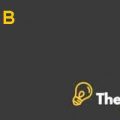
Introduction& problem Identification
The owner, Hinrich Springer, and his Son Axel Springer, started their media company, Axel springer, in the year 1946 situated in Hamburg a city of Germany. They started their business with just $887 but Axel Springer took this company to the heights by acquiring and publishing famous newspapers like Bild and Die Welt and its published products soon become the household items and provided Axel Springer significant capital and sources of expansion.
In 1960s, Axel Springer increased its political influence and controlled the market share of newspapers, Sunday papers for young, TV and radio listings by acquiring more than $40 market share in each segment.
In the previous two decades, Axel Springer spread its operations in different countries by increasing its product ranges from internet service and digital television to publishing magazines and books. In twentieth century, the industrial revolution to digital information system and computerization changed the media distribution strategies significantly.
Digitalization and computerization play an important in Axel Springer’s diversification strategy in. The company seeks significant growth by entering into a number of foreign markets, expanding its core printing activities and further exploring digital opportunities. However, the downturn of the economy due to certain reasons hit the company hard in 2001.
Due to the downturn in the economy, the market value of the German publishing sector lost 3.5%, down from 34.0 billion Euros to 32.8 billion Euros. Newspaper sales in Germany, which were boasting one of the highest newspaper dropped by 7.7% and it is expected that it will continue further.
The decline of the German advertising industry and lower revenues for the first time in more than 30 years affected the company. For the first time in the history, Axel Springer announced the loss of more than 200 million euro at the end of fiscal year 2001.
In 2013, Mathias Döpfner, the CEO of the Axel Springer suggested that the firm needs to re-evaluate and adapt its corporate strategy to most effectively align with the new age. He also suggested that whether it is possible to mobilize a sufficiently powerful partnership in order to help the digitally transforming old media content providers in that scenario if yes then how it would be(Burgelman, 2014).
Evaluation of Mathias Dopfner’s Strategic Leadership
Dopfner became the CEO of the company at the age of 39 years and his appointment proved the major changes in the company. Dopfner also helped the company in tough decision when he was the member of board and the head of the newspaper division.
Döpfner’s strategy regarding customers that they should be places at the center of the company’s orientation, cost cutting and restructuring programs helped the company to attain journalistic quality for the publications. For the first time in the history of the company, Döpfner suggested that the Market leadership in core business, Internationalization and Digitization are the key pillars of Axel Springer’s strategy.Dopfner’s strategic leadership helped the company in getting,
Successful Restructuring
Döpfner introduced an intensive restructuring program in order to monitor the crisis in the publishing industry through which the Axel Springer was passing. First of all he introduced the two key options of strategic growth, which were internationalization of the print business and the branching out into the German TV sector. The restructuring also affected the company’s employee base, and downsizing of the employees results in the savings of 250 million Euros.
Furthermore, he introduced the strategy of internal consolidation by the means of cooperation and the pooling of resources in many areas, which helped the organization to improve its operations in many areas of the business.
These strategic moves play an important role in the performance of the company instead of the challenging environmental conditions and helped the company move back into profit by raising its EBITA from 32.7 million Euros to 121.2 million Euros and its net earnings reached to 69 million Euros. It is expected that the debt of the company also reduced by 119 million Euros. In addition to this, Döpfner continued his turnaround program, which also helped the company to increase its net income by 130.2 million euro.
In order to improve its competitive position, the company introduced many new publications. In addition to ,the company made its presence into the Russian market and other five new licensing agreements were signed in Finland, Ukraine, Estonia, Macedonia, and Indonesia.
It is expected that on the completion the restructuring program, the share price of the company would increase from 70 Euros to 86 Euros, which also increases its earnings per share to 4.66 euro. Increase in the financial performance of the company helps the company to achieve in its targeted strategy of becoming a Market leadership in core business, Internationalization and Digitization.................................
This is just a sample partial case solution. Please place the order on the website to order your own originally done case solution.














